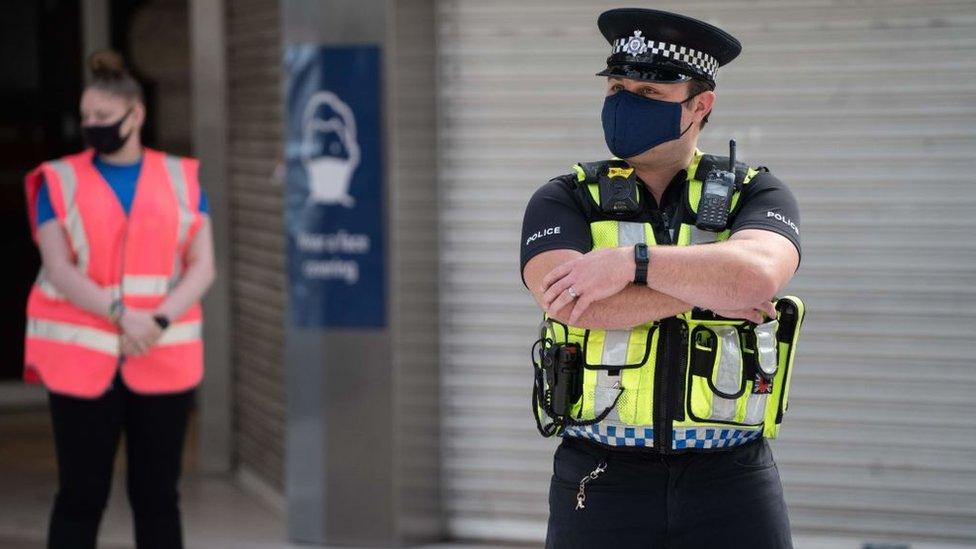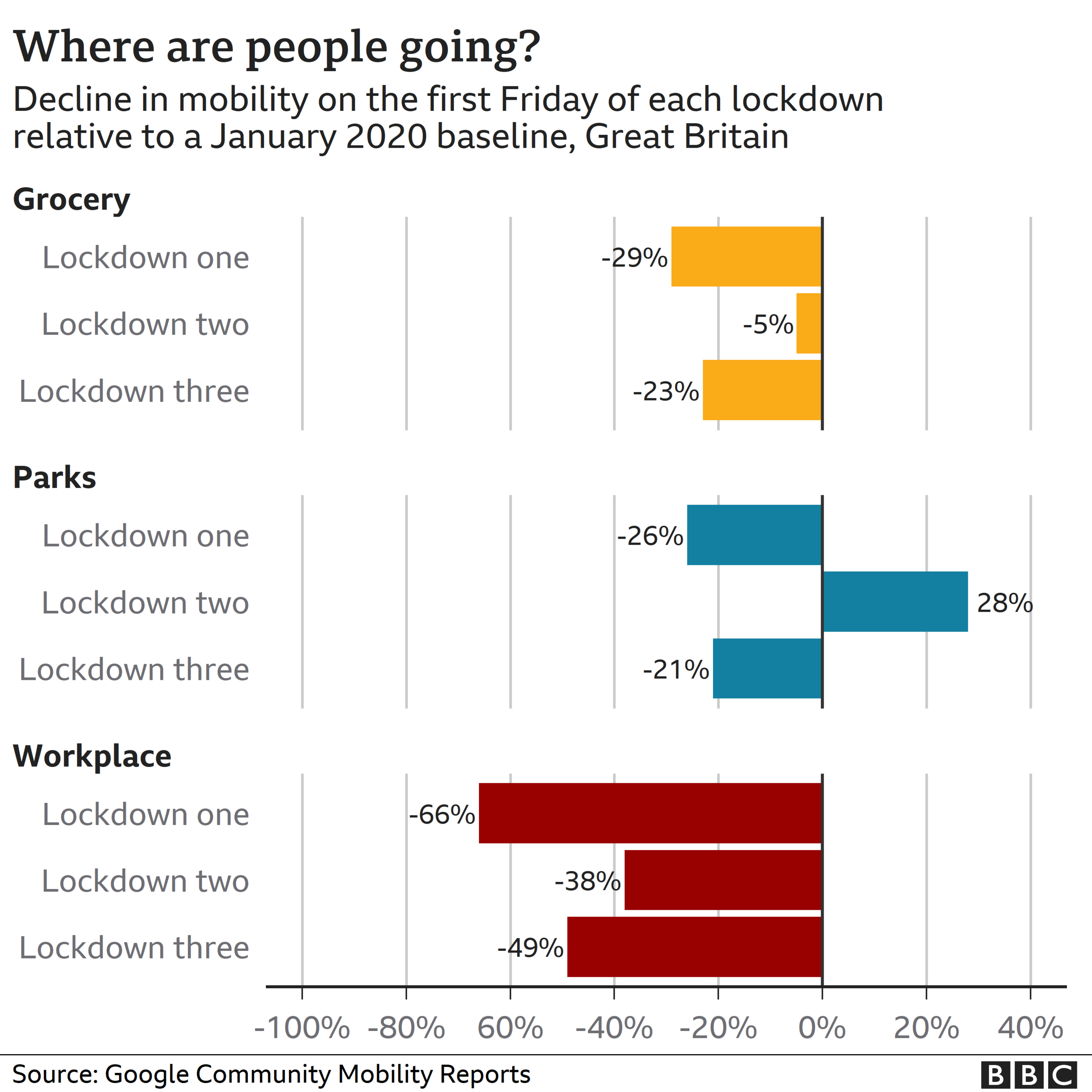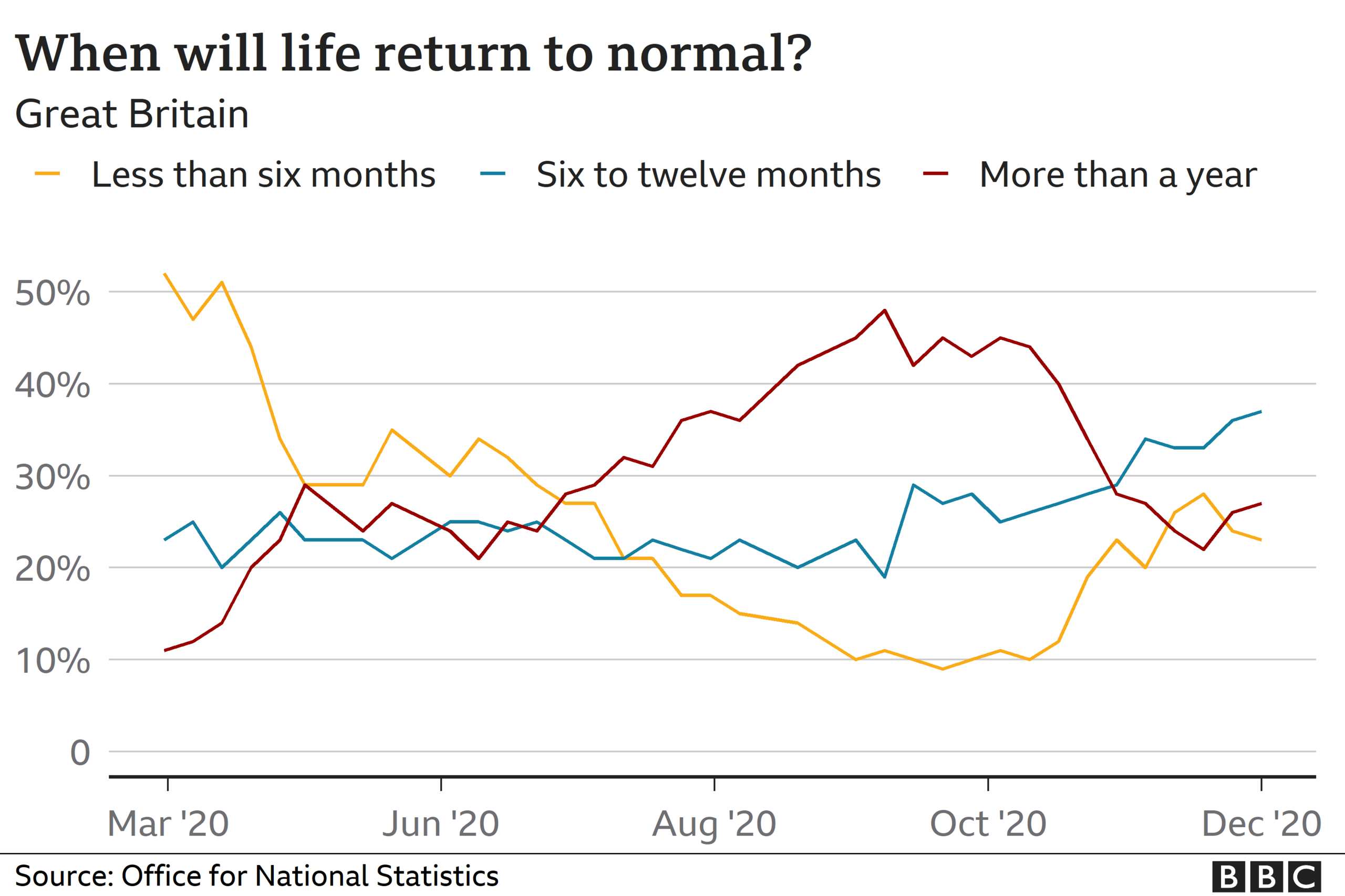Lockdown: Are people breaking Covid rules?
- Published

Health Secretary Matt Hancock has urged people to "stay at home and reduce all social contact that is not absolutely necessary".
But are people acting on his advice and how does their behaviour compare with previous lockdowns?
What does the data show?
People are leaving their homes more than during the first days of the March lockdown, according to data from several sources.
Apple, Google and the Department for Transport all collect "mobility data".
Google does it by recording the location histories on people's mobile devices, while Apple records how many people are asking for directions. The Department for Transport uses different metrics, including traffic cameras and ticket sales.
They then take that data and compare how different it is to a national "baseline" established in early 2020, before the pandemic started
We used the data to look at what it showed for the first Friday of each lockdown in England :
lockdown one (which began on 23 March, 2020)
lockdown two (which began on 5 November 2020)
lockdown three (which began on 5 January 2021)
The Google and Department of Transport data covers England, Scotland and Wales, while the Apple data also includes Northern Ireland.
We are looking at this data relative to English lockdown rules.
This means that in November, during England's second lockdown, the data might be slightly swayed by mobility in other nations with less strict coronavirus restrictions. Both now and in March, all countries had "stay at home" rules at the same time.
The Department for Transport data shows that trains, buses, the Tube in London and cars are all being used more now than during the first lockdown.
Back in March and April 2020, car use dropped to about 35% of pre-pandemic levels. This lockdown, it's around 60% of pre-pandemic levels.

The first lockdown saw National Rail and London Underground usage drop to 10% and 6% of its usual traffic alike on the first Friday of the restrictions. This time, they both have around 16% of the usual traffic.
Data from Apple's mobility report shows, external that on the first Friday of the most recent lockdown, people were driving and walking around at twice the rate of the first lockdown. Public transport use was also higher.

Similarly, data from Google gives us more clues, external about activity outside the home.
Workplaces appear noticeably busier than in the first lockdown but the gap is smaller when it comes to parks and supermarkets.
It's worth noting that in both the Google and Apple reports, people appear to be moving around a lot less during lockdown three than in lockdown two in November.

Separate data from the route-search app Citymapper shows about twice as many routes were planned in Birmingham, Manchester and London in early January 2021 compared with March 2020.
Are more people breaking the rules then?
It's important to note that increased levels of activity - compared with the first lockdown - don't necessarily mean more people are flouting the rules.
More things are open now compared with March last year, including nurseries, garden centres and estate agents. This could explain why more people are going to work.
And while these numbers suggest more movement, the Office for National Statistics' weekly survey , external(conducted over the Christmas period) on attitudes to coronavirus, suggests almost 80% of people in Great Britain still support restrictions.
The same survey shows that over the course of the pandemic (even when rules were loosened) around nine in 10 people say they have consistently followed social distancing and contact rules.
This survey is regularly updated but has not yet covered the third lockdown.

TESTING: How do I get a virus test?
SUPPORT BUBBLES: What are they and who can be in yours?
TEST AND TRACE: How does it work?

But police officers across the country have reported some elements of lockdown fatigue.
Paul Netherton, deputy chief constable of Devon and Cornwall Police, told BBC Breakfast: "I think people are beginning to get fed up with it. I can understand that but we have to be firm, we have to save lives, we have to make sure people are keeping apart, isolating and staying at home."
The Office for National Statistics' survey also notes an increased pessimism - over time - about when the crisis might end.

The same ONS survey notes almost a third of people think they do not have enough information from the government to "manage" the coronavirus pandemic. And a smaller proportion (12%) say it is difficult to understand the rules.

